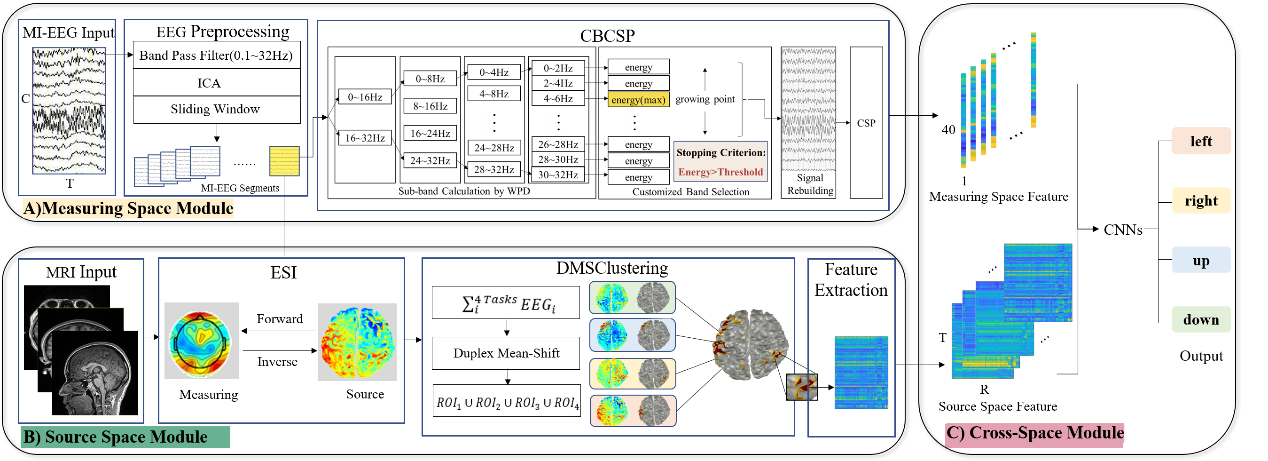Effective classification of multi-task motor imagery electroencephalogram (EEG) signals is a way to decode the brain's motor intentions, which helps to achieve accurate and efficient multi-dimensional brain-computer interaction. However, the accuracy and robustness of traditional decoding methods need further improvement for practical application, due to the inherent limitations of low spatial resolution of the EEG signals and the large differences between the EEG signals of the subjects.
LIU Yan, an associate researcher in DAI Yakang's group at the Suzhou Institute of Medical Engineering of the Chinese Academy of Sciences, has now proposed a cross-space convolutional neural network (CS-CNN) method with customized characteristics.
"This enables a high-precision and robust multi-task motor imagery EEG signal decoding algorithm possible," said LIU.
The CS-CNN fuses the global functional representation of the measurement space and the high-resolution brain source activation information of the source space to provide multi-level features.
At the same time, the customized rhythms and brain regions of interest are screened to achieve differential extraction of personalized frequency-spatial valuable information, so as to build the best classification model for each subject and improve the accuracy and robustness of the decoding algorithm as a whole.

Customized frequency-global spatial feature description is realized through adaptive spectrum sensing and common spatial pattern. The researchers then reversed the EEG signal into the high-resolution source space through the EEG source imaging (ESI), and extracted the time-series relationship of the high-activation state dipole to complete the customized time-high-resolution spatial-domain feature description.
LIU and her team extracted the two sets of feature matrices from different spaces and reflecting different levels of information, spliced through convolutional neural network to construct a cross-space global high-resolution customized fusion feature representation, and finally achieved high-precision and strongly robust four-category classification.
Validation at Suzhou Science and Technology City Hospital showed that the accuracy of the proposed cross-space decoding method based on the self-test dataset and the public dataset was 96.05% and 90.37%, and the inter-subject accuracy range error was 3.79% and 3.90%, respectively.
"Compared with other state-of-the-art algorithms based on the same public dataset, several indicators such as classification accuracy and inter-subject variance have achieved the best performance," said LIU.
The proposed cross-space method based on customized feature representation can effectively decode multi-task motor imagery EEG information, and provide a reliable algorithm basis for building a multi-instruction set, high-precision and robust brain-computer interface system, LIU said.
Results of the study was published in IEEE Transactions on Neural Systems and Rehabilitation Engineering entitled "A Cross-Space CNN With Customized Characteristics for Motor Imagery EEG Classification."
This work was supported by the National Natural Science Foundation of China, the STI 2030-Major Projects, and the Jiangsu Key Research and Development Plan, etc.






